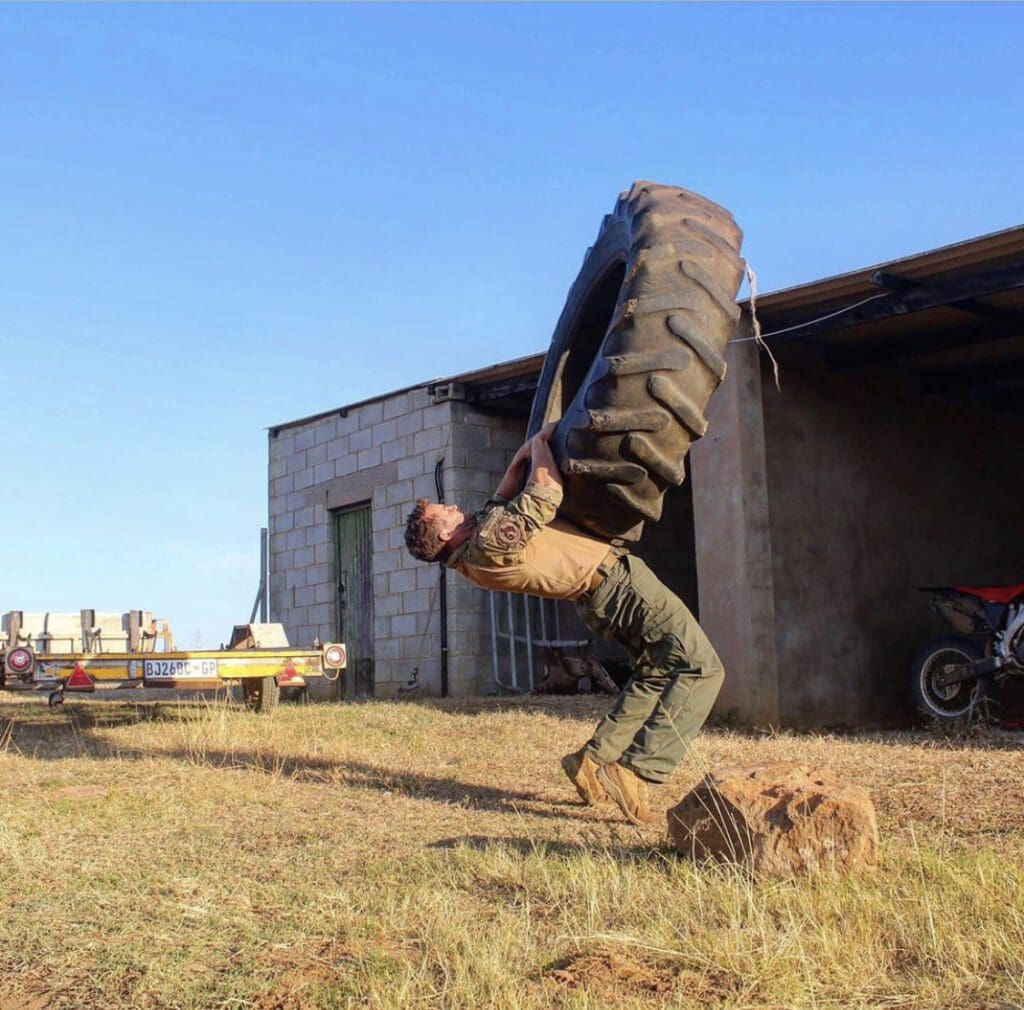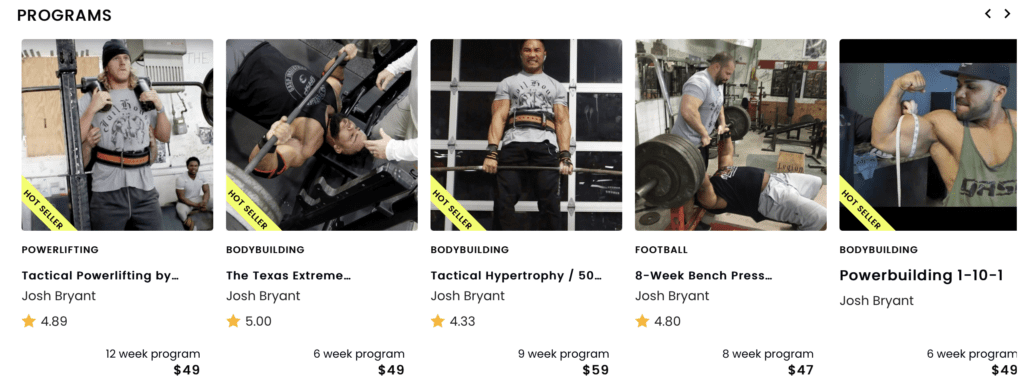Olympic Lifts for Tactical Athletes
by: Josh Bryant
The Olympic lifts are a proven method of developing and increasing power production!
Olympic weightlifting coaches rightfully shout from their soap boxes that the Olympic lifts are highly technical and require years for proficiency, let alone mastery. Ironically, these same coaches promote the Olympic lifts as the holy sacrament of strength and conditioning programs for everything from Turkish Oil Wrestling to football.

Plane Specific
Another consideration is that power development is plane specific, something that renowned baseball strength coach, Eric Cressey, has pointed out. Olympic lifts are performed in the sagittal plan and when exclusively relied upon as the means through which power development is achieved within a program, multiplanar power development is often neglected.
Learning Curve
The skill curve of Olympic lifting movements and the subsequent time investment that’s required to become proficient enough to elicit a significant training effect makes the clean and snatch a poor choice to teach tactical athletes, who have a finite energy reserve with very limited time to train. Olympic lifting advocates admit that these lifts take years to gain proficiency; remember, our objective is to train lathletes not Olympic lifters.
As legendary strength coach Joe DeFranco has pointed out over the years, even gifted athletes often have subpar Olympic lifting technique because their posterior chains are weak. If a tactical athlete’s technical flaws are due to a lack of hamstring, glute and low back strength, no amount of practice is going to optimize technique. In this case, the athlete would benefit from more deadlift variations, pull throughs and other exercises that target the posterior chain.
Getting the most bang for your buck is called training economy and for tactical athletes, with limited time to train, is gospel. Building a stronger posterior chain will improve your power clean, but it doesn’t work the other way around. Olympic lifts not only have poor training economy but can also be stressful on the wrists, elbows and shoulders.
Bottom line is, Olympic lift variations are highly beneficial to athletes who perform them pain free with great technique. If you work with a tactical athlete with great technique in the Olympic lifts and she can perform them pain free, use the Olympic lifts in her program. The time investment and the risk-to-benefit ratio are not practical for tactical athletes not already proficient in these lifts.
Dr. Bob Gajda, surgeon and 1966 Mr. Olympia winner, had the following observation about power cleans, one of the most basic Olympic lifting variations:
“These coaches hand out these bigger-faster-stronger programs for these kids and tell them to do power cleans. I had seven quarterbacks last year with sprained wrists because they don’t know how to do power cleans. We have all these personal trainers running around America thinking they know how to do it but they don’t. They don’t know the difference between a reverse curl and a clean. And we have to get the old guys back just to teach these kids how to lift weights because they are all hurting themselves.”

Triple Extension
Dr. Fred Hatfield, ISSA co-founder, devised compensatory acceleration training (CAT) i.e. lifting a submaximal weight with maximal force. Louis Simmons popularized Hatfield’s work with his dynamic effort method, the same concept of lifting submaximal weights as fast as possible.
By the late 1990s, a growing but minority of strength and conditioning coaches started using compensatory acceleration training with submaximal weights to build explosive strength as an exodus from the Olympic lifts.
Prior to this, for decades and even today, coaches still argue if the Olympic lifts are a non-negotiable for athletes in pursuit of maximal power production. The reason Olympic variations have such strong advocates is based on the assertion that Olympic lifts produce much higher power outputs compared to powerlifts.
Admittedly, this is true for maximal Olympic lifts compared to maximal powerlifts but the devil is in the details! Maximal power is obtained with much heavier relative loads with Olympic lifts compared to the relatively lighter loads of one-repetition max in the powerlifts.
Renowned Olympic lifting researcher, advocate and master’s Olympic lifting competitor, Dr. John Garhammer, has demonstrated in research that the highest peak power outputs involved in elite Olympic weightlifters weighing approximately 242 pounds was 4,807 watts of power during certain phases of the Olympic lifts. Another 2005 study that examined the power clean reported maximum power values of 4,230 watts of power, conversed to a 2007 study that showed 4,900 watts of power.
A 2011 study examined 23 rugby players and powerlifters and showed that deadlifts at 30 percent of their one-repetition max produced 4,247 watts of power! This is just behind the values stated by the same researchers in another 2011 study, which showed that peak power in the deadlift was 4,388 watts (at 30 percent of one-rep max) while peak power in the trap bar deadlift was 4,872 watts (at 40 percent of one-rep max). Amazingly, some individuals could reach values over 6,000 watts in submaximal deadlifts!
A landmark 2015 study compared the log clean and press with the clean and jerk and concluded the log lift may be an effective conditioning stimulus to teach rapid triple extension while generating similar vertical and anterior-propulsive forces as the clean and jerk with the same given load.
So yes, properly executed Olympic lifts catalyze maximal power production but so do submaximal powerlifts. The difference is the learning curve which is much simpler with powerlifts.
Submaximal powerlifts might build power, but what about triple extension strength (extension of the ankles, knees and hips) crucial for running, jumping, throwing and just about any high-speed activity requiring athleticism?
Traditionally, many experts have felt that Olympic lifts were the only strength-training modality that could effectively build triple-extension strength. While triple extension is a key component on the second pull phase of the clean and snatch, watch lifters as they get heavier performing these lifts; they get less and less triple extension because their sole objective is to pull the bar high enough to get under it and catch it, not maximize triple extension. If maximum triple extension is the goal in either of these lifts, the simpler high pull variation that eliminates the catch phase is a better choice.
Final Thoughts
If Olympic weightlifting made you a better tactical athlete, being a tactical athlete would make you a better Olympic weightlifter! Training economy is key for your strength and conditioning success unless the movement trained is your sport!
Give one of Josh’s Strength and Conditioning programs a shot HERE!

